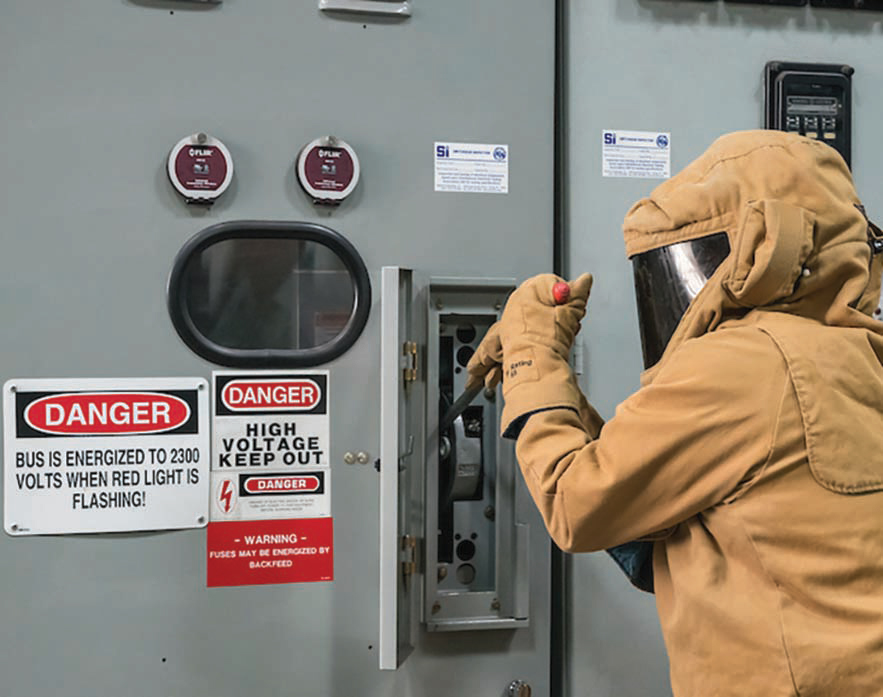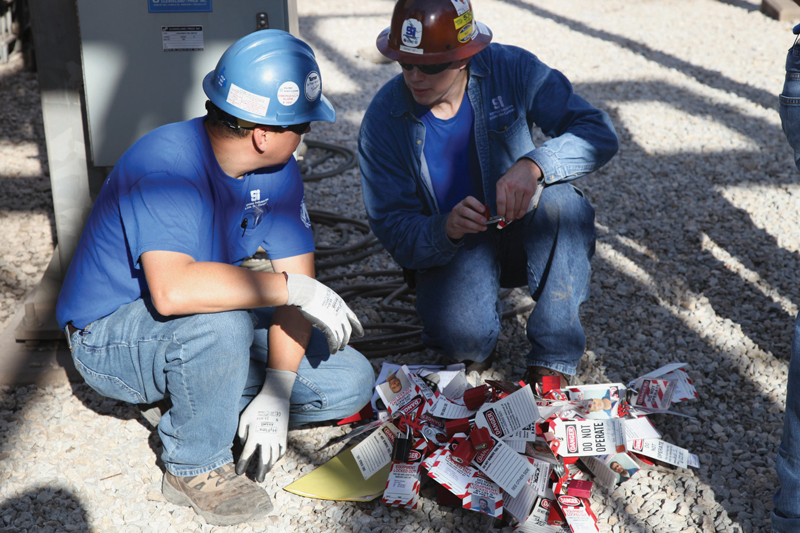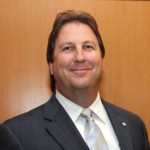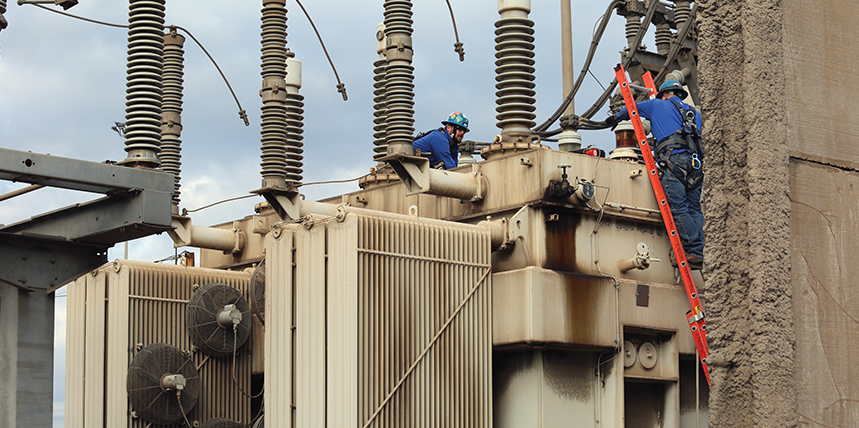You may have seen my LinkedIn post about this, but we’ll expand further with some examples to highlight this resource for a better understanding of NFPA 70E.
There were two points to the message:
- The 2024 edition of the Handbook for Electrical Safety in the Workplace is a great resource for understanding the latest edition of the 70E.
- It included a cool reference to Jim White, a long-time contributor to NETA, the industry, and Shermco.
Edited by Dean Austin, Chris Coache, and Corey Hannahs, the authors do a great job of providing usable information to us, the electrical workers.
It was also a fitting tribute to Jim White to recognize his industry contributions by dedicating the handbook to him, and for those who knew him — and even those who didn’t — it should make us all proud (see dedication sidebar on page 17).
As a member of the 70E Technical Committee, we often have conversations on how to make the 70E document user-friendly and practical for the qualified electrical worker in the field. It is, after all, a work practices document for electrical safety in the workplace, so shouldn’t it be as usable as possible to people actually doing the work?
Overall, the committee does a good job on the quest for usability. But during the writing and development of a consensus standard that has certain structure requirements to comply with standards-writing language…the words we have to use don’t always match electrician lingo on the job site. It’s not a criticism of the process, just a fact. For example, “Hey Joey, get off yer behind and hand me them Kleins — and who’s the nimrod who wrote this safety book?”
This article provides a few representative examples of where the handbook can help you out.
2021 EDITION TO 2024 EDITION – WHAT CHANGED?
At the beginning of the handbook, there is a section titled NFPA 70E® Summary of Technical Changes: 2021 to 2024. The editors pointed out that an emphasis on alignment with the 2020 NEC Style Manual was put forth in this edition. The following changes were made to better align with the NEC style manual:
- Relocation of definitions. Chapter 3 definitions were relocated to Article 100, with a few revisions and consolidation.
- Defined terms. Titles of defined terms were modified and grouped by their base term.
- Informational note structure. Informational notes were restructured and publication dates were removed from referenced standards, noting that the latest edition should be used.
- Reference structure. The language was revised to point to a specific section rather than an entire article.
- Language efficiency and accuracy. General editorial updates were made for consistency and clarity.
WHERE IT ALL STARTS: THE SCOPE AND THE PURPOSE
Here’s a useful tip for you to better understand NFPA 70E. Arguably, one of the most important things you can do to better understand the intent of NFPA 70E is to read and understand both the Scope and the Purpose, which can be found in Article 90 and in the various sections found within Article 90. If you do that, it sets the baseline for a better understanding of the content within the standard.
Reading the actual words of the 70E standard, it states:
90.1 Scope. This article covers the use, application, and arrangement of this standard.
90.2 Purpose. The purpose of this standard is to provide a practical safe working area for employees relative to the hazards arising from the use of electricity.
So, you read this in the field and think to yourself, “OK, I get it.” But do you really? This is where the handbook can help you better understand the article statements. For instance, the handbook editors point out:
The purpose of NFPA 70E is to provide employees with a working area that is safe from the risk associated with the use of electricity in the workplace. Using an appropriate mix of risk controls from the hierarchy of risk control (HoRC) methods — as required by 110.3(H) and explained in Informative Annex F — can reduce the risks associated with the use of electricity to an acceptable level.
Now, read that again. Section 90.2 gives you the words, and the handbook explains the words in a relatable and usable context. This is just a small example of the many paragraphs of guidance found within the handbook.
Here’s another example in that same section:
Each requirement contained within a standard might not be the best practice that can be employed for a specific condition, but it is the minimum threshold of what must be done. A standard cannot cover all conditions that exist for every piece of equipment, it cannot foresee every hazard present at every installation, and it cannot anticipate the actions of every employee at every company. Users should not limit themselves to meeting the minimum requirements — they should consider appropriate additional precautions beyond those provided in the standard to address their specific situations.
Whether you are a person responsible for a group or a single individual working on a job site, would you not agree that the narrative cited above provides you with a better understanding of what we are trying to accomplish here?
CHAPTERS: WHY EACH ONE IS IMPORTANT AND RELEVANT
After reading the expanded narrative on Article 90 and now that you (hopefully) have a better understanding of the Scope and the Purpose, the next thing to do is understand the Chapters as well as the intent of each one. The handbook provides us guidance on these as well:
Chapter 1: Safety-Related Work Practices
Chapter 1 of NFPA 70E consists of five articles that include the necessary information and essential safety-related work procedures required for employees to work safely where there is an unacceptable risk of injury from exposure to electrical hazards in the workplace. The information and safety-related work procedures included in NFPA 70E should form the basis for the employer’s electrical safety program (ESP).

Article 100 offers the terms and definitions necessary to understand the standard.
Article 105 establishes electrical safety-related work practices and procedures and distinguishes the responsibilities of employers and employees.
Article 110 covers the overall requirements for formulating and implementing an electrical safety program, including policies, risk assessments, employee training, program and field auditing, documenting, and the relationships between the types of employers.
Article 120 provides the information necessary to create an electrically safe work condition (ESWC). It provides the requirements to establish a lockout/tagout program for a facility where electrical hazards are present.

Article 130 defines the situations under which an ESWC must be established. It also describes the situations under which energized electrical work can be justified and the requirements for working safely with energized electrical equipment.
Chapter 2: Safety-Related Maintenance Requirements
An electrical work environment consists of three interrelated components: installation, maintenance, and safe work practices. Safe work practices are most effective when the installation is code-compliant and the equipment is maintained appropriately.
Chapter 2 is not a comprehensive maintenance program, but it does address safety-related maintenance of electrical equipment. A good maintenance program can provide the predictability and reliability necessary for safe operation.
Chapter 3: Safety Requirements for Special Equipment
Each article in Chapter 3 addresses a single unique equipment type or work area, and each article stands alone. Requirements found in one article apply only to that special equipment type or work area and amend the requirements of Chapter 1 only for that purpose. However, more than one article might apply, such as Article 340 and Article 360, which both cover power conversion equipment.
Informative Annexes
Finally, you should review each one of the Informative Annexes. Even though they are not mandatory 70E requirements, they function in many ways like the handbook — providing explanatory text and examples to help you better understand and utilize the 70E standard.
SUMMARY
“The cool thing about reading is that when you read a short story or you read something that takes your mind and expands where your thoughts can go, that’s powerful.”
The same can be said about reading a little bit of the 70E handbook at every opportunity you get because you just might expand your mind and become a safer electrical worker….which ain’t a bad thing. And full disclosure, the quote is from Taylor Swift — go figure!
Be safe out there, and make sure you One-Twenty-dot-Six-(Seven) every time!! Hey, look it up!
You can find theNFPA 70E, Handbook for Electrical Safety in the Workplace, at www.nfpa.org.

Ron Widup is the Vice Chairman, Board of Directors, and Senior Advisor, Technical Services for Shermco Industries and has been with Shermco since 1983. He is a member of the NETA Board of Directors and Standards Review Council; a Principal member of the Technical Committee on Standard for Electrical Safety in the Workplace (NFPA 70E); Principal member of the National Electrical Code (NFPA 70) Code Panel 11; Principal member and Chairman of the Technical Committee on Standard for Competency of Third-Party Evaluation Bodies (NFPA 790); Principal member and Chairman of the Technical Committee on Recommended Practice and Procedures for Unlabeled Electrical Equipment Evaluation (NFPA 791); a member of the Technical Committee Recommended Practice for Electrical Equipment Maintenance (NFPA 70B); and Vice Chair for IEEE Std. 3007.3, Recommended Practice for Electrical Safety in Industrial and Commercial Power Systems. He is a member of the Texas State Technical College System (TSTC) Board of Regents, a NETA Certified Level 4 Senior Test Technician, State of Texas Journeyman Electrician, a member of the IEEE Standards Association, an Inspector Member of the International Association of Electrical Inspectors, and an NFPA Certified Electrical Safety Compliance Professional (CESCP).
NFPA 70E HANDBOOK DEDICATION
To James R. “Jim” White
They say it takes a village to write, revise, and produce a standard. The 2024 edition of NFPA 70E was no different, as many long hours were put forth to produce the document. Unfortunately, it was missing a villager during the final portions of the revision cycle with the passing of Technical Committee member Jim White.
Always willing to help, Jim was a man you could turn to for honest, well-thought-out, succinct, and often humorous contributions. Jim was a lifetime advocate for electrical safety as an active participant in several electrical codes and standards, including NFPA 70E, NFPA 70B, NFPA 70, (CMP-13), ASTM F18, ANSI/NETA ATS and ANSI/NETA MTS, and several IEEE standards.
The electrical maintenance and safety community is better because of his contributions, and his influence can be found within the pages that follow.
We dedicate this edition of the NFPA 70E Handbook for Electrical Safety to Jim White. May he rest in peace.
